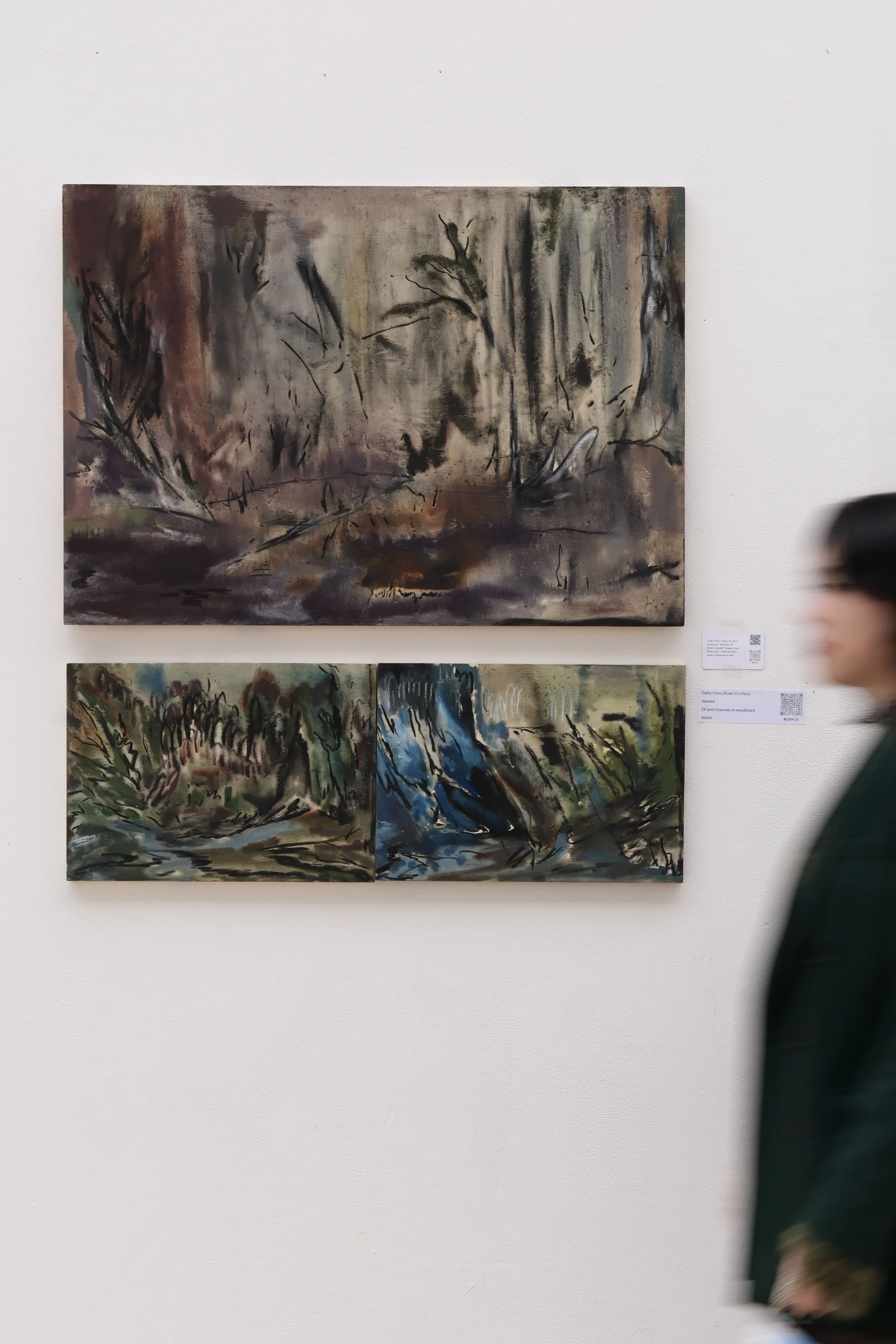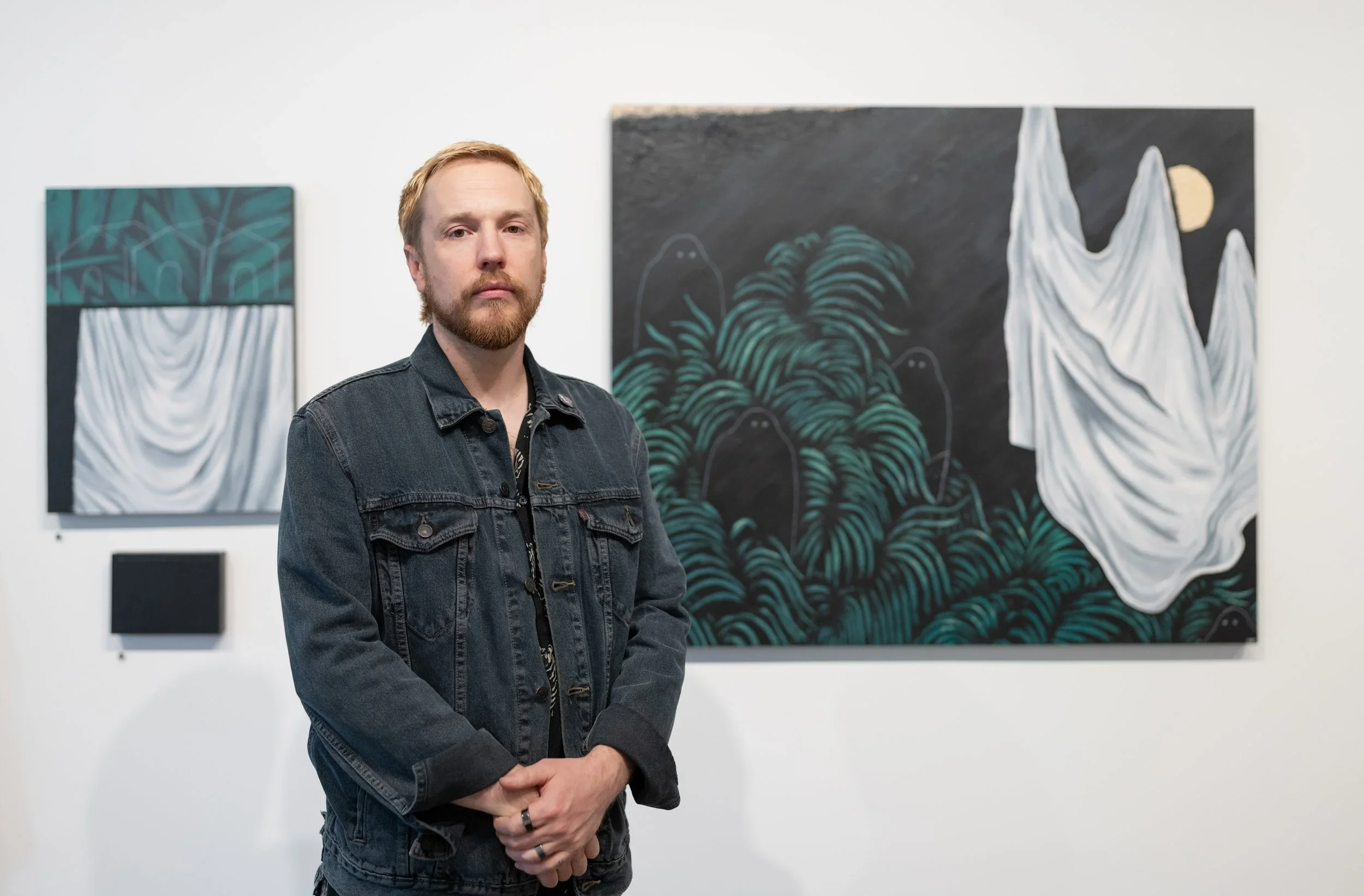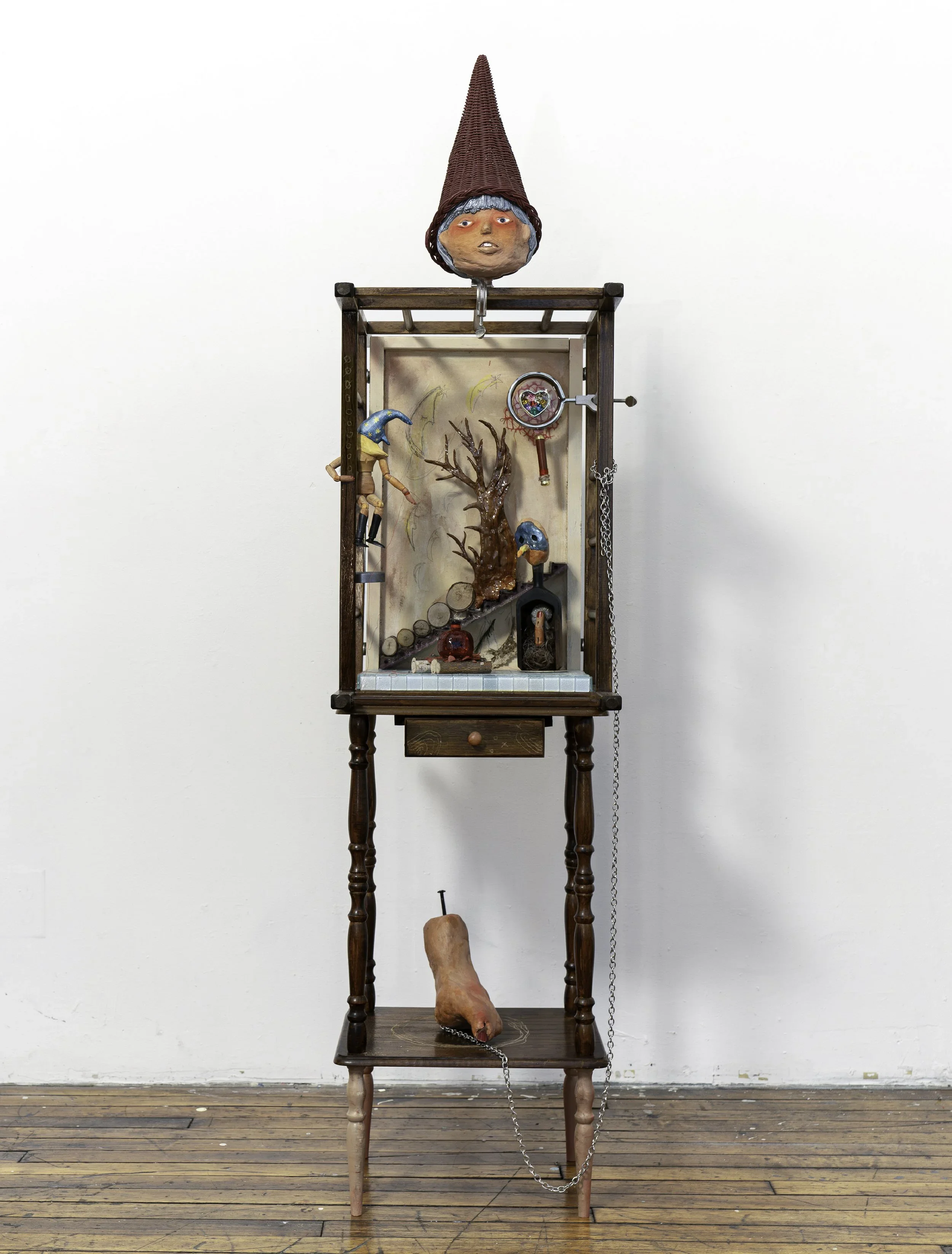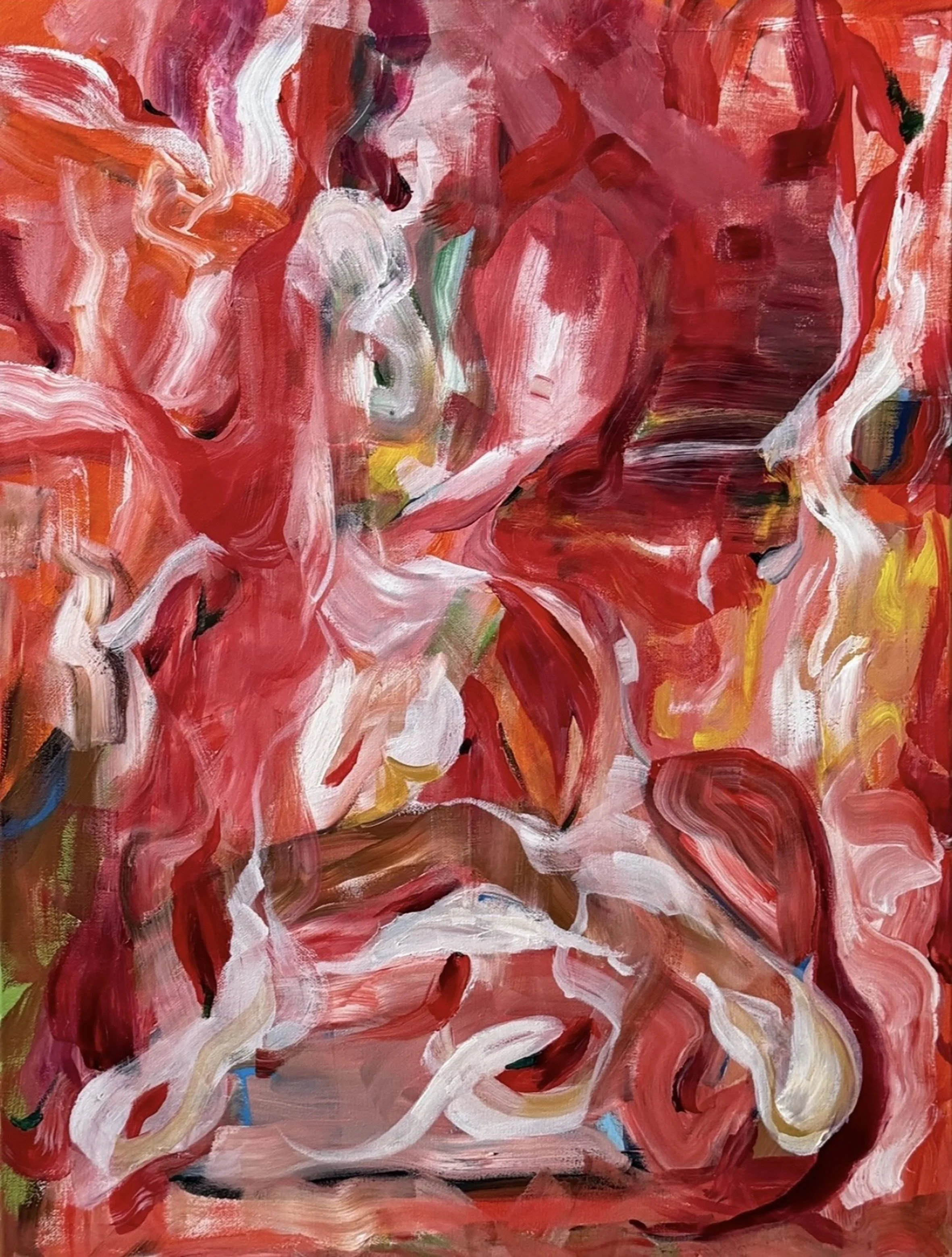10 Questions with Kuan-Yu Chou
Al-Tiba9 Art Magazine ISSUE19 | Featured Artist
Kuan-Yu Chou (b. 2001, Tainan, Taiwan) is a visual artist currently based in London. She is pursuing an MA in Art and Science at Central Saint Martins, University of the Arts London, specialising in painting, performance, photography, and video. Her interdisciplinary practice explores the intersection of body, memory, and perception. Kuan-Yu’s work has been exhibited internationally, including solo exhibitions at Islands Art Park and A+ Gallery in Taiwan, and group exhibitions across London, Glasgow, and Taipei. Her work has been reviewed by AATONAU and interviewed in Visual Art Journal.
Kuan-Yu Chou - Portrait
ARTIST STATEMENT
Kuan-Yu’s work stems from an exploration of the relationship between the self and the world, using intuitive and poetic visual language to express inexpressible emotions. Focusing on body memories and inner experiences, her work invites viewers into a silent, tangible visual realm that intertwines body, emotion, and dreams. Through paintings, photographs, and installations, she creates a space where the viewer can reflect on vulnerability, suffering, and survival, while exploring the invisible connections between the self and the universe.
Grass, Oil and charcoal on panel © Kuan-Yu Chou
AL-TIBA9 ART MAGAZINE ISSUE19
Get your limited edition copy now
INTERVIEW
To start, could you tell me a bit about yourself? Who are you, and how did you first decide that making art was the path you wanted to follow?
I’m an artist from Taiwan, currently based in London. My practice stems from a deep inquiry into the relationship between self and the world, often through bodily memory, perception, and emotional experience. I didn’t decide to “become” an artist at a particular moment; it was more of a gradual realisation that art is the only language capable of holding the complexity of what I feel.
My past experiences with illness shaped me profoundly. During that period, my body became a vessel of perception, a sensitive field that responded to even the smallest events and emotions. Making art became not just a practice, but a necessity for survival, a way of translating instability, pain, and resilience into something perceivable. From then on, I knew that art was not only a career path, but my way of exploring existence itself. Over time, it became my faith, and I see myself as a devoted believer. Art has always been my most reliable refuge, my shelter in the storm.
You’re now pursuing an MA in Art and Science at Central Saint Martins. What drew you to this interdisciplinary course, and how has it shaped the way you think and create?
I was drawn to the Art and Science course because it reflects how I see the world: interconnected, fluid, and resistant to rigid boundaries. I’ve always been fascinated by philosophy, phenomenology, and how perception can be translated and transformed. This program has exposed me to diverse ways of thinking and broadened the horizon of my own practice. I’ve learned to embrace dialogue between disciplines, allowing scientific perspectives and artistic sensibilities to challenge one another, and to bring those exchanges into my explorations of embodiment, memory, and affect.
Installation view © Kuan-Yu Chou
Your work spans painting, performance, photography, and video. Do you see these as separate languages, or as different aspects of the same practice? And how does your work change based on the medium you use?
For me, they are different aspects of the same practice. I don’t see mediums as isolated containers, but as extensions of the same core impulse, to explore the unspeakable through embodied language. Each medium has its own rhythm: painting is tactile and layered, like the sedimentation of memory; performance and video are temporal, unfolding like breath; photography captures fragments of perception. I choose the medium instinctively, depending on what the work calls for. Sometimes the body itself must become the medium, other times it is the texture of a surface or the rhythm of moving images.
The body, memory, and perception are at the heart of your practice. When did you first realise these ideas were central to your work, and how have they evolved?
I became aware of their importance during my illness. My body was not just a tool but the very field of my experience, instability, pain, and healing sharpened my awareness of bodily memory and perception. Over time, these ideas evolved from being purely personal to becoming shared spaces. I began to see the body as both individual and collective, memory as both personal and cultural, and perception as a bridge between inner and outer worlds. My current works continue to explore how these dimensions intersect, constantly shifting between fragility and resilience.
You often explore themes that can feel deeply personal, such as vulnerability, suffering, and survival. How do you transform such intimate experiences into works you share with the public?
For me, transformation happens through sincerity and instinct. I start with a strong emotional or conceptual core, sometimes just a phrase or a mood, and let intuition guide the making. My aim is not to directly narrate personal stories, but to translate them into visual or spatial languages, textures, rhythms, and silences that others can enter through their own experiences. By focusing on the sensory and poetic, my work opens a space where vulnerability and survival are not just mine, but part of our shared human condition.
Harvest Love, Oil and Charcoal on canvas, 26x20 cm, 2025 © Kuan-Yu Chou
I’m not ready to go, Oil and Charcoal on canvas, 84x60 cm, 2025 © Kuan-Yu Chou
Many describe your work as poetic and silent. How do you find the right balance between subtlety and emotional intensity?
I don’t think of subtlety and intensity as opposites; they are two currents flowing together. Silence can be the most powerful form of intensity because it allows emotions to expand in the space between the work and the viewer. My process is instinctual: layering materials, leaving traces, listening for the moment when the work feels full. It’s less about achieving balance and more about allowing the work to breathe. Within that breathing space, poetry and intensity coexist.
Your art has been shown in Taiwan and the UK. How does showing your work in different cultural contexts shift the way you see it, or the way audiences respond?
The responses reveal how context shapes interpretation. In Taiwan, audiences often connect more directly with the cultural and emotional nuances of my work. In the UK, viewers sometimes bring unexpected readings, shaped by their own frameworks. Both are valuable, exhibiting abroad has made me more conscious of where I come from, while also reminding me that sincerity and embodied experience can transcend cultural boundaries. When someone tells me my work resonated with them, even across vastly different backgrounds, it feels like the strongest confirmation of connection.
You’ve also been featured in AATONAU and Visual Art Journal. Do you enjoy reading how others interpret your work, or do you prefer to let the images speak for themselves without explanation?
I think both are important. I don’t create with the audience’s interpretation in mind, but I value how others bring their perspectives into dialogue with my work. Sometimes their readings surprise me, revealing aspects I wasn’t consciously aware of. At the same time, I trust that images, textures, and silences can speak for themselves. For me, what matters most is sincerity; if the work carries that, people will feel it in their own way.
Nausea Ⅰ, Oil and Charcoal on wood board, 42x30 cm, 2025 © Kuan-Yu Chou
Nausea Ⅱ, Oil and Charcoal on wood board, 42x30 cm, 2025 © Kuan-Yu Chou
Looking forward, what new projects or directions are you most curious to explore next?
After recently losing a close friend, I’ve been reflecting deeply on themes of love, mourning, absence, and rebirth, not only as personal experiences but as shared human conditions. I’ve also encountered new people and changes in my everyday life that have shifted my perspective. I want to continue along this path, exploring new possibilities while expressing the purest vision I can, my way of seeing the world.
And lastly, where do you see yourself in five years from now? What is your biggest goal to achieve?
In five years, I hope to continue my practice, developing international projects that integrate painting, performance, and installation with greater depth and breadth. My biggest goal is not tied to a specific exhibition or award, but to remain true to my work while expanding its resonance. I would like to publish a book weaving together my writing, visual practice, and philosophical reflections. Most importantly, I want to create spaces where people can encounter themselves through art, where vulnerability, loss, and resilience can be shared as universal experiences.
Artist’s Talk
Al-Tiba9 Interviews is a curated promotional platform that offers artists the opportunity to articulate their vision and engage with our diverse international readership through insightful, published dialogues. Conducted by Mohamed Benhadj, founder and curator of Al-Tiba9, these interviews spotlight the artists’ creative journeys and introduce their work to the global contemporary art scene.
Through our extensive network of museums, galleries, art professionals, collectors, and art enthusiasts worldwide, Al-Tiba9 Interviews provides a meaningful stage for artists to expand their reach and strengthen their presence in the international art discourse.
























